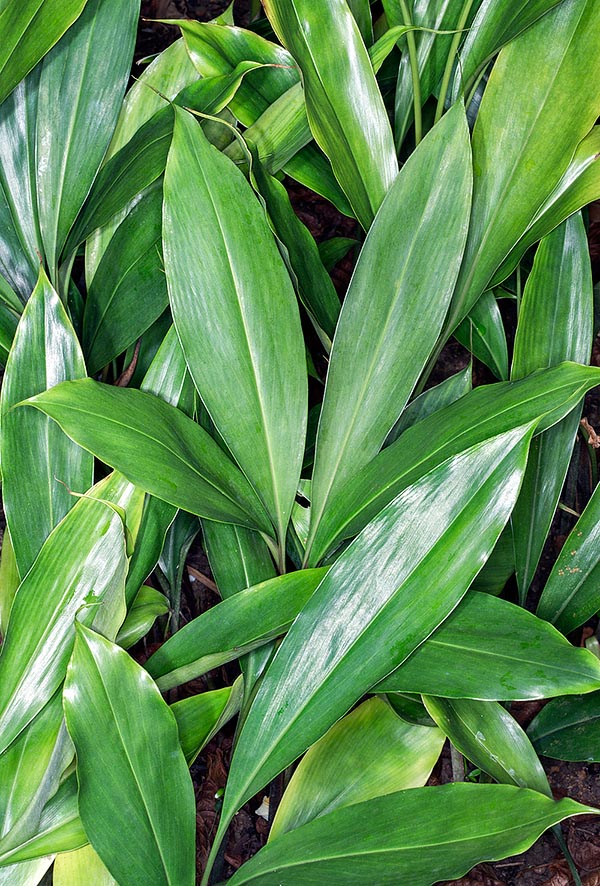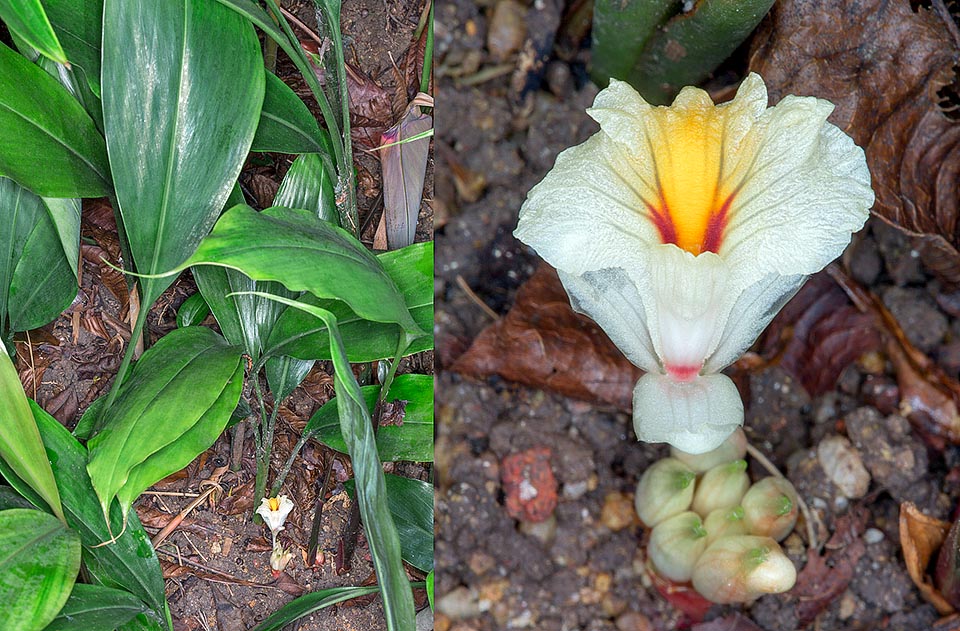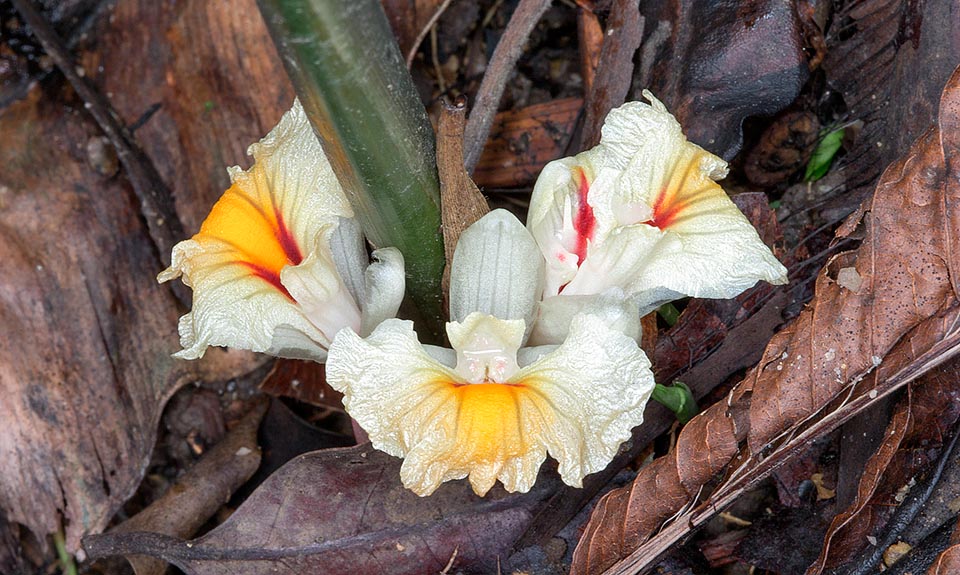Family : Zingiberaceae

Text © Pietro Puccio

English translation by Mario Beltramini

Relative to the ginger, Elettariopsis smithiae is native to Peninsular Malaysia and Thailand © G. Mazza
The species is native to Peninsular Malaysia and Thailand where it lives in the underwood of the humid forests, in the lowland as well as hilly.
The name of the genus is the combination of Elettaria, genus belonging to the same family, and of the Greek substantive “ὄψις“ (opsis) = look, due to the resemblance between the two genera; the species is honoured to the Scottish botanist Rosemary Margaret Smith (1933-2004) who has dedicated almost entirely his professional activity to the study of the Zingiberaceae.
Common names: serai acheh, tepus wangi (Malay).
The Elettariopsis smithiae Y.K.Kam (1982) is a perennial herbaceous species with creeping rhizome, evergreen, that forms dense tufts with pseudostems, up to about 70 cm tall, provided of 2-6 leaves, on a 2,5-6 cm long petiole, 25-35 cm long and 4-7 cm broad, with entire margin and about 2 cm long caudate apex, of glossy intense green colour; the crushed leaves give off a scent of lemon.
Inflorescences from the base of the pseudostem on short peduncle, usually hidden by the thick layer of vegetal debris covering the soil of the forest, with white-cream flowers, about 7 cm long, that gradually open.
Tubular calyx, about 3 cm long, with bilobed apex, corolla with thin 5 cm long tube, dorsal lobe spatulate and concave (cucullate) and ovate latera lobes, ovate labellum with creped margins, of white colour with central intense yellow band, that serves as guide for the pollinating insect, and red veins.
The fruit is a capsule of about 3 cm of diameter. It reproduces by seed, in draining organic loam maintained humid at the temperature of 24-28 °C, but usually and easily by division.
Fast growing species with ornamental foliage and showy flowers that seem to spring from the ground, needs a climate with high temperatures and humidity, in the air as well as in the soil, suitable as grund cover in shady gardens, even if small, on draining soils rich of organic substance.
Cultivable in pot for the decoration of greenhouses, winter gardens and inner spaces even little luminous, with lowest values of temperature over the 16 °C and high humidity, that may be obtained recurring to frequent nebulizations with non calcareous water, to avoid unaesthetic spots on te leaves, at ambient temperature.

Creeping rhizomatous species, grows in the underwood humidity with 70 cm pseudostems. The flowers, semi hidden by the leaves, bloom gradually at the soil level © Giuseppe Mazza
The leaves are utilized to aromatize traditional Malaysian dishes; parts of the plant are utilized in the traditional medicine, in particular in the postpartum problems.

The central yellow band of corollas guides the pollinating insects. Malaysian people aromatize the dishes with leaves and various parts of the plant have medicinal virtues © Giuseppe Mazza
